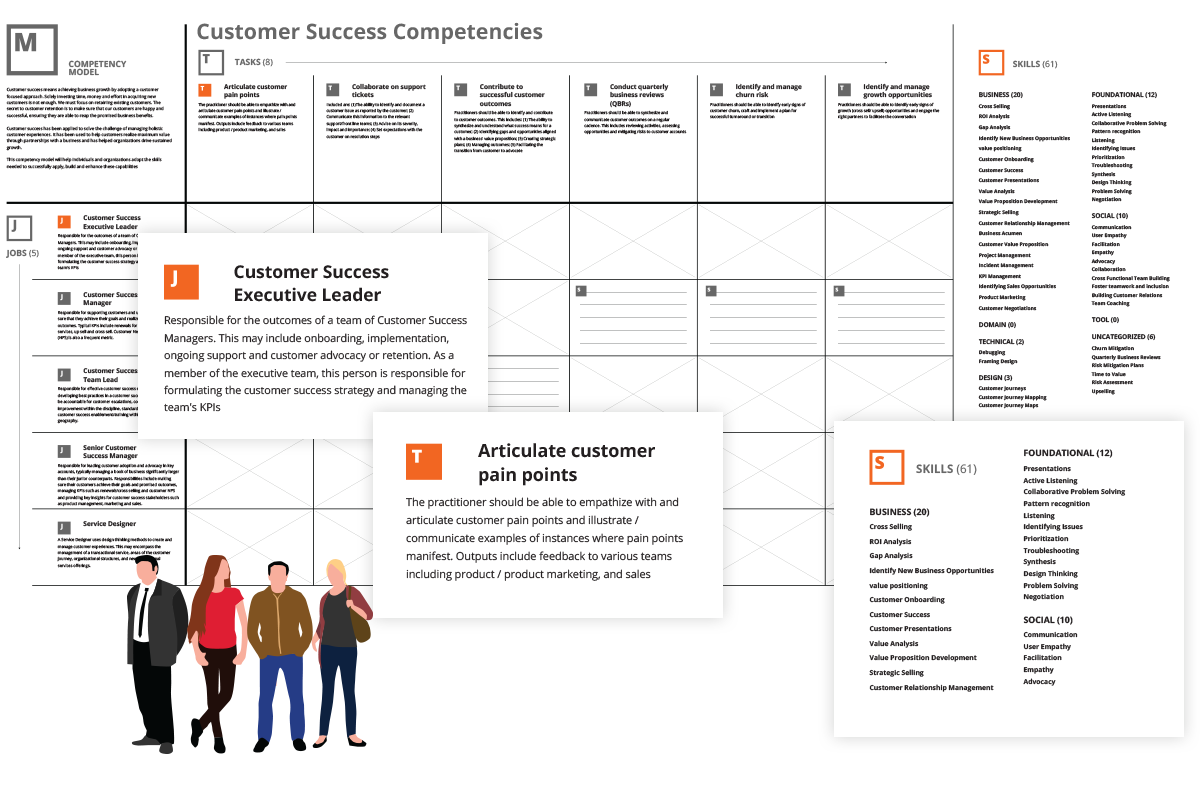Building skill and competency models together
Skills and competency models are social things, they should not be built by experts in isolation
One reason skill and competency models get a bad name is that they are often built top-down by experts who are not close to the actual work. I have been one of those ‘experts’ and like the VP People quoted last week I was also suffering from Competency Model PTSD. As a result, I stayed away from competency models for many years, probably to the detriment of what we are trying to do at Ibbaka, which is to connect potential, opportunity and performance.
Over the past year, we have been working on a different way to design and evolve competency models (which are also called capability matrices, skill models or even just taxonomies). There are three key aspects to this design approach.
Seed then feed the model, bottom-up, from the experiences and skills of people actually doing the work.
Keep the model open so that it can evolve. Competency models live in complex adaptive systems and are part of the connective tissue in these systems. They have to be living documents, responding to change while catalyzing it.
Make the models modular so that they can be recombined. Modular design is critical to evolution. People will combine skills and competencies in new ways for new jobs and new categories. Competency models need to be modular so that they can be recombined.
We are applying these principles to our work on open competency models and are beginning to use them with our customers as well.
Card sorting
Card sorting is a standard tool used in user experience design. There are many different approaches to card sorting and it is used to explore different design challenges. Usability.gov has a good basic introduction. In our case, we are interested in exploring three separate questions and our card sorting exercise has been designed with this in mind.
What skills matter most in Pricing Expertise and Customer Success?
What are the components of a Competency Model?
How do the skills and other components get organized?
These are open questions, and we are using the open card sort approach. People are invited to add additional skills and categories or to combine and connect the skills and categories. We prepare card decks to use in this work and the decks will have plenty of blank cards.
We have cards of at least two different sizes (one for skills and one for other things) and seed the decks with at least some of the skills we have identified in previous work. The previous work includes numerous interviews with experts and a series of formal surveys. We also identified various documents that we can feed into our skill identification engine (this is a component of our skill management platform that ingests documents of various types and identifies the skills implied by the document. It works through a combination of natural language processing, semantic inference and mapping to our skill graph).
Some the components we see in competency models include the following (this is not an exhaustive list). We are not defining these here as we want the definitions to emerge from use. (For those interested, some of us are students of the latter works of Ludwig Wittgenstein, ‘if you want to know what a word means, look and see how it is used.’)
Jobs
Job Roles
Project Roles
Tasks
Competencies
Behaviors
Values (yes values see our survey on this)
Credentials and Badges
Skills (the atomic unit in our approach)
Learning Resources (widely defined)
Experiences
Questions
Key Performance Indicators
Outcomes (personal, team, organization, community)
The connections between each of these things is generally more important than any individual item. We capture some of these connections in the card sorting work so that we can build skills and competency models together.
Ibbaka Posts on Competency Models and Competency Frameworks
From user experience to competency model design - Margherita Bacigalupo and EntreComp
Competency framework designers on competency framework design: The chunkers and the slice and dicers
Competency framework designers on competency framework design: Victoria Pazukha
Design research - How do people approach the design of skill and competency models?
The Skills for Career Mobility - Interview with Dennis Green
Lessons Learned Launching and Scaling Capability Management Programs
Talent Transformation - A Conversation with Eric Shepherd, Martin Belton and Steven Forth
Competency Models Made Easy - Two Simple Spreadsheets to Build Your Own Competency Models
Individual - Team - Organizational use cases for skill and competency management
Building skill and competency models together (this post)
Co-creation of Competency Models for Customer Success and Pricing Excellence
Competencies for Adaptation to Climate Change – An Interview with Dr. Robin Cox
Architecting the Competencies for Adaptation to Climate Change Open Competency Model
Integrating Skills and Competencies in the Talent Management Ecosystem
Organizational values and competency models – survey results



